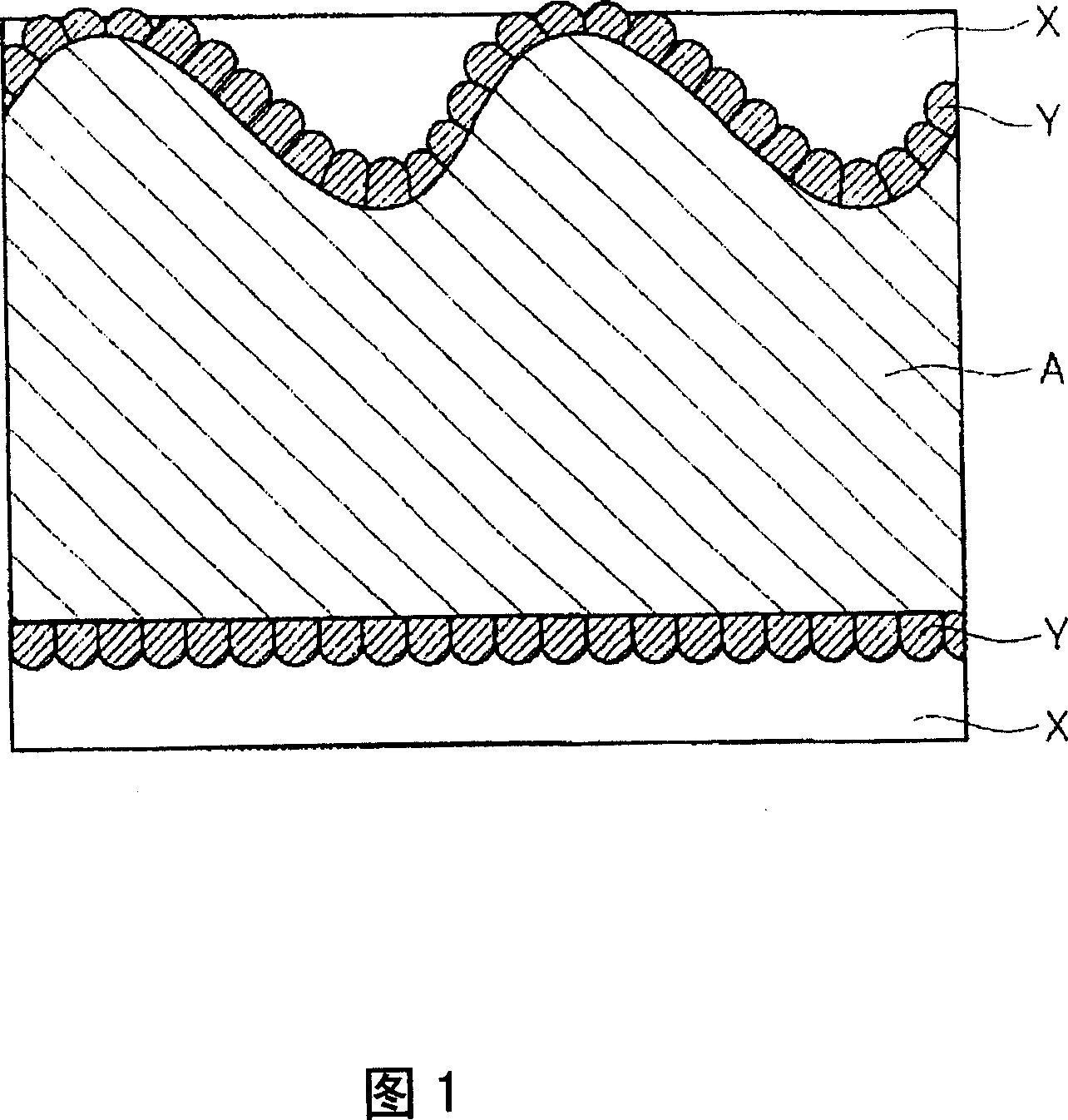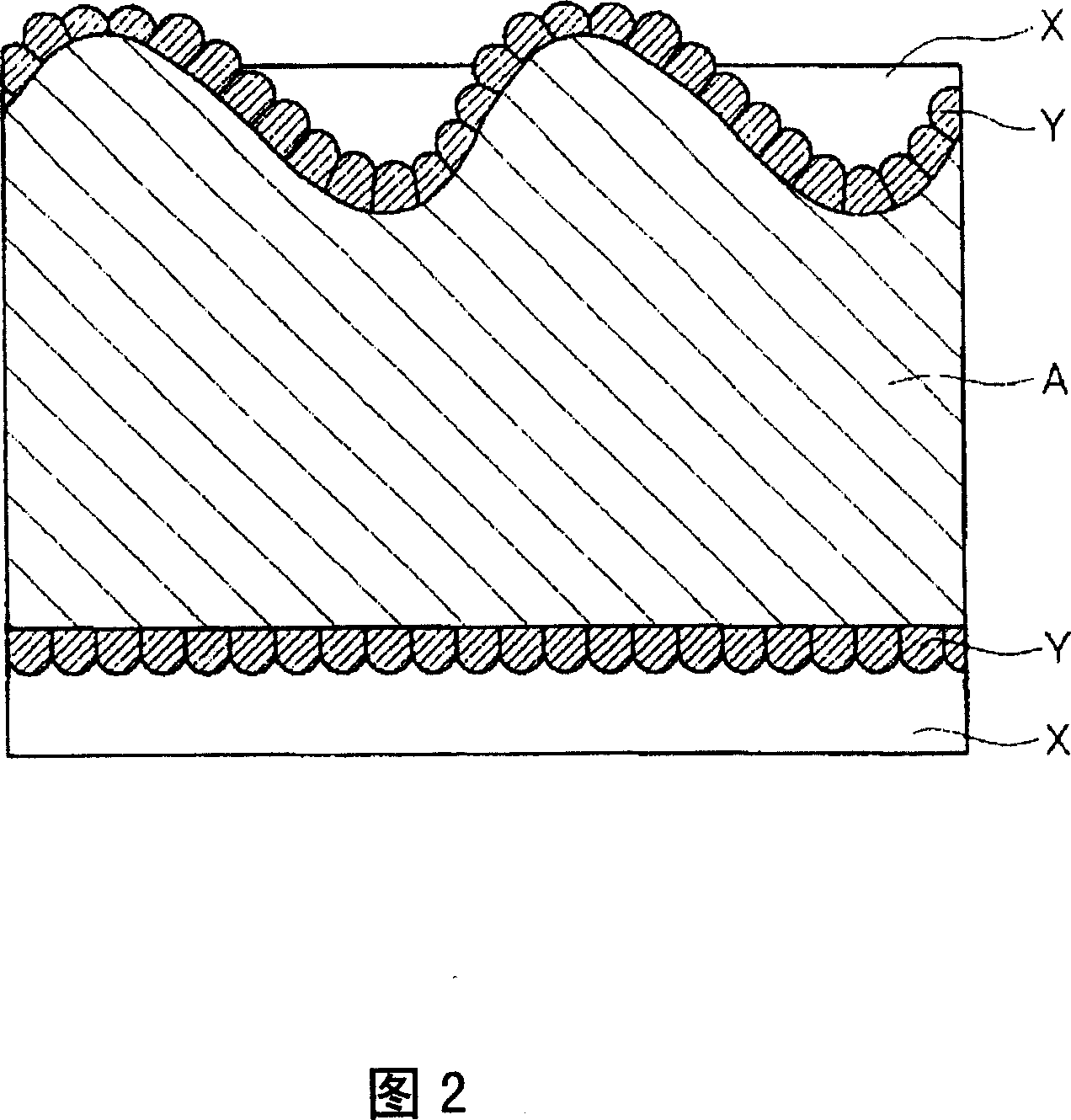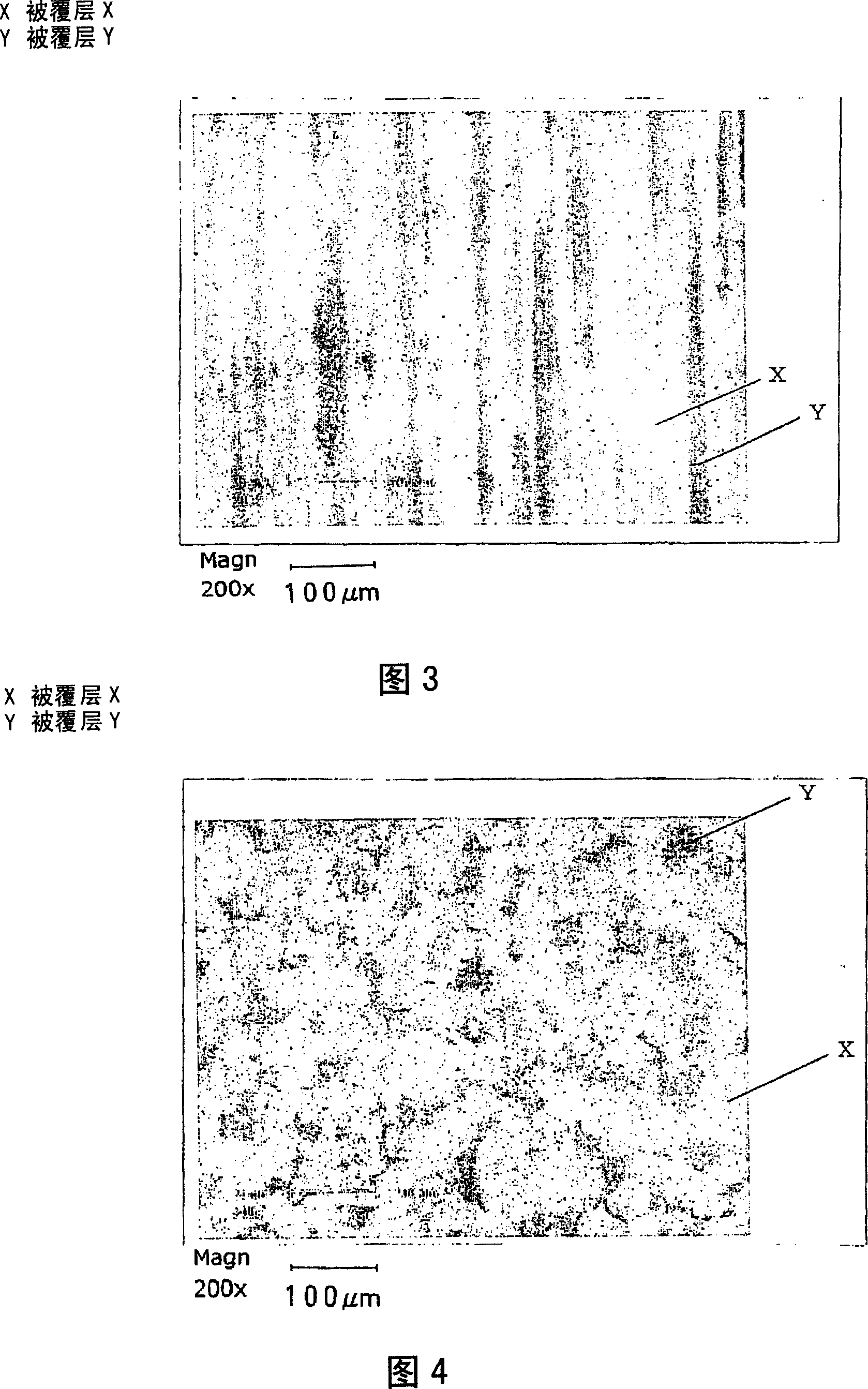Conductive material for connecting part and method for manufacturing the conductive material
A technology for connecting parts and conductive materials, applied in the field of conductive materials for connecting parts, can solve the problems of reduced corrosion resistance and solderability, reduced terminal insertion force, micro-sliding wear, etc., and achieves excellent electrical reliability, friction and so on. Effect of coefficient reduction and low contact resistance
- Summary
- Abstract
- Description
- Claims
- Application Information
AI Technical Summary
Problems solved by technology
Method used
Image
Examples
Embodiment 1
[0095] [Production of Cu alloy base material]
[0096] Table 1 shows the chemical components of Cu alloys (No. 1, 2) used. In this example, these Cu alloys were subjected to surface roughening treatment by mechanical means (rolling or grinding) to a Cu alloy base material having a thickness of 0.25 mm and a predetermined surface roughness. In addition, the surface roughness was measured in the following manner.
[0097] [Measurement method of surface roughness of Cu alloy base material]
[0098] It measured based on JISB0601-1994 using the contact surface roughness meter (Tokyo Seiki Co., Ltd., SURFCOM1400). The surface roughness measurement conditions were as follows: a cutoff value of 0.8 mm, a reference length of 0.8 mm, an evaluation length of 4.0 mm, a measurement speed of 0.3 mm / s, and a stylus tip radius of 5 μmR. In addition, the surface roughness measurement direction is a direction at right angles to the rolling or polishing direction performed during the surface ...
Embodiment 2
[0132] For each base material of Cu alloy No. 1 that has undergone surface roughening treatment, Cu plating with a thickness of 0.15 μm is applied, and after Sn plating with various thicknesses is performed, reflow treatment is performed at 280°C for 10 seconds. Thus, test materials (No. 11-19) were obtained. Table 4 shows the production conditions thereof. In addition, among the surface roughness parameters of the base material, the average interval Sm with respect to unevenness is all within the above-described preferable range (0.01 to 0.5 mm). In addition, the average thickness of the Cu plating and Sn plating described in Table 4 was measured in the same manner as in Example 1 above.
[0133] [Table 4]
[0134]
Test No.
base material
Ni plating
Cu plating
Sn plated
Reflow processing
No.
arithmetic mean
Roughness: P.a
The average thickness
The average thickness
The average thickne...
Embodiment 3
[0142] For the base material of Cu alloy No. 1 with surface roughening treatment, Cu plating with a thickness of 0.15 μm was applied, and Sn plating with various thicknesses was applied, and various reflow treatments were performed to obtain test materials. (No. 20-26). Table 6 shows the production conditions thereof. In addition, among the surface roughness parameters of the base material, the average interval Sm with respect to unevenness is all within the above-described preferable range (0.01 to 0.5 mm). In addition, the average thickness of the Cu plating and Sn plating described in Table 6 was measured in the same manner as in Example 1 above.
[0143] [Table 6]
[0144]
Test No.
base material
Ni plating
Cu plating
Sn plated
Reflow processing
No.
arithmetic mean
Phase roughness: Ra
The average thickness
The average thickness
The average thickness
temperature
time
...
PUM
| Property | Measurement | Unit |
|---|---|---|
| Thickness | aaaaa | aaaaa |
| The inside diameter of | aaaaa | aaaaa |
Abstract
Description
Claims
Application Information
 Login to View More
Login to View More - R&D
- Intellectual Property
- Life Sciences
- Materials
- Tech Scout
- Unparalleled Data Quality
- Higher Quality Content
- 60% Fewer Hallucinations
Browse by: Latest US Patents, China's latest patents, Technical Efficacy Thesaurus, Application Domain, Technology Topic, Popular Technical Reports.
© 2025 PatSnap. All rights reserved.Legal|Privacy policy|Modern Slavery Act Transparency Statement|Sitemap|About US| Contact US: help@patsnap.com



